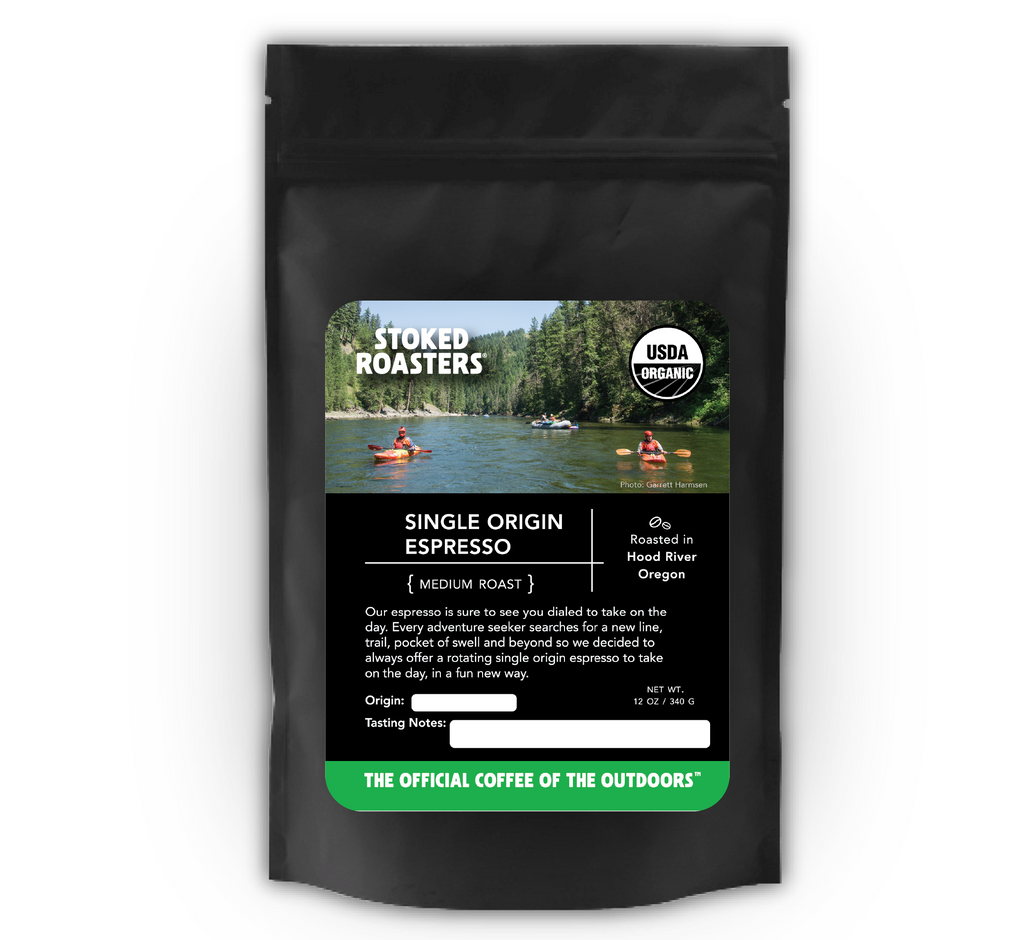What Makes SOE Single Origin Espresso Different from Mixed Roasts
Wiki Article
Recognizing Coffee Beans: the Trip From Coffee to Blended Coffee Beans

The Origins of Coffee: An International Viewpoint
While you might consider coffee as a modern staple, its origins map back centuries, intertwining with societies around the world. The tale starts in Ethiopia, where tale claims a goat herdsman called Kaldi discovered the stimulating effects of coffee beans after observing his goats romping energetically after eating them. This stimulated passion, leading to coffee's spread to Arab traders who cherished the brewed drink. By the 15th century, it got to Persia, Egypt, and Turkey, where coffeehouses ended up being social centers for discussion and culture.As trade paths broadened, coffee made its method to Europe in the 17th century, rapidly acquiring appeal. Each culture added its special spin to coffee preparation, improving its history.
Growing and Harvesting of Espresso Beans
As coffee's journey progressed, the emphasis shifted to the farming and harvesting of details bean ranges, particularly those utilized for coffee. You'll locate that coffee beans commonly originate from Arabica or Robusta plants, each offering distinct tastes. The ideal expanding conditions include high elevations and abundant, well-drained soil, which improve the beans' top quality.Throughout the harvest, picking methods differ. Timing is vital; you desire to collect when the cherries reach peak perfection for maximum flavor.
When collected, the beans are planned for handling, which is vital in identifying their final preference. Understanding the farming and gathering processes offers you insight into what enters into your favorite coffee, enhancing your gratitude for each and every mug.
Processing Methods: From Cherry to Bean
Since you have actually learnt more about gathering coffee beans, let's check out how those cherries change into the coffee beans you love. You'll see how different harvesting strategies influence taste, complied with by the necessary actions of fermentation and drying out. We'll damage down the milling and grading procedure that determines your coffee's high quality.Gathering Methods Explained
When it concerns coffee, understanding harvesting methods is crucial, considering that they straight impact the flavor and top quality of the beans you delight in. There are 2 primary methods: selective selecting and strip picking. Discerning picking includes hand-picking only ripe cherries, ensuring you obtain the finest top quality beans. This technique commonly results in a richer taste profile, though it's more labor-intensive. On the other hand, strip picking ways gathering all cherries simultaneously, no matter perfection. While it's quicker and less expensive, this can lead to a mix of flavors, affecting the end product. Ultimately, the choice of harvesting strategy can substantially affect your coffee experience, so it deserves understanding exactly how those beans made it to your mug.Fermentation and Drying
After harvesting, the next steps in handling coffee beans play a significant duty fit their taste. You'll discover that fermentation is vital, as it assists damage down the mucilage bordering the beans, boosting their preference account. Depending on the approach, this procedure can last from a few hours to a number of days, with varying results based on temperature and moisture.When fermentation is complete, drying follows, which is equally important. You can pick from mechanical or sun-drying drying techniques. Sun-drying enables the beans to take in flavors from the environment, while mechanical drying guarantees constant moisture levels regardless of weather condition. Appropriate drying is essential to avoid mold and mildew and protect the beans' high quality, ultimately affecting your mug of coffee.
Milling and Grading Process
As fermentation and drying established the phase for flavor advancement, the milling and grading process warranties that only the finest coffee beans make it to your cup. This phase involves eliminating the outer layers of the coffee cherry, consisting of the parchment and husk. Top notch beans get a higher grade, resulting in a richer coffee experience.Roasting Strategies: Opening Flavor Potential
When you roast coffee beans, the approach you choose can significantly influence the taste account. Understanding the relationship in between time, temperature, and toasting strategies is key to disclosing the possibility of your mixture. Let's check out just how these components collaborated to produce the perfect mug.Toasting Approaches Discussed
While you may assume that all coffee roasting methods generate the very same results, the truth is that each strategy reveals one-of-a-kind taste possibilities in the beans. Drum toasting utilizes a turning drum to evenly disperse warmth, improving caramelization and producing a well balanced taste. Air roasting, on the various other hand, distributes warm air around the beans, advertising a lighter roast with pronounced level of acidity.
Influence On Taste Profile
Different toasting methods not only affect the procedure but likewise greatly affect the flavor profile of the coffee beans. When you choose a light roast, you'll experience intense acidity and floral notes, showcasing the bean's beginning. On the other hand, a medium roast equilibriums acidity with sweetness, typically revealing chocolatey touches. Dark roasts, on the other hand, bring out bold, smoky flavors, often masking the bean's one-of-a-kind attributes. Each technique exposes various oils and compounds, resulting in a large array of flavors. By trying out different toasting styles, you can discover which profiles reverberate with your palate. Recognizing these subtleties assists you appreciate the virtuosity behind your mug of coffee, enhancing your overall experience with every sip.Time and Temperature Elements
To launch the full flavor potential of coffee beans, both time and temperature level during the roasting process play significant duties. When roasting, you'll discover that higher temperatures can promptly develop tastes, however if you hurry it, you might wind up with burned notes. Conversely, lower temperature levels permit a much more steady flavor growth, showcasing the beans' special qualities.
Timing is just as essential; expanding the roast too long can bring about a loss of level of acidity and brightness, while too brief a roast might leave the beans underdeveloped. Discovering that sweet place needs method and testing. By changing these aspects, you can disclose the abundant, complicated flavors concealed within each bean, developing a genuinely impressive coffee experience.
The Art of Mixing: Crafting One-of-a-kind Coffee Accounts

Start by choosing a base coffee that provides a strong foundation. After that, choose corresponding beans to enhance details flavor notes. A bright Ethiopian bean can bring fruitiness, while an abundant Brazilian coffee includes body. Experimentation is key-- don't be scared to readjust proportions until you find your ideal profile.
As you blend, maintain in mind that each combination informs a story. You're not just making coffee; you're producing an experience. So, take your time, taste frequently, and delight in the journey of finding your signature blend.
Developing Methods: How Prep Work Affects Taste
Mixing coffee opens up a domain of taste possibilities, but just how you make that blend can substantially influence your final cup. Different brewing approaches remove one-of-a-kind tastes and aromas, so it's critical to select wisely. For example, a French press allows sediments and oils to stay, developing an abundant, full-bodied experience. On the various other hand, a pour-over highlights the coffee's clearness and brightness, excellent for showcasing delicate notes.Coffee, with its high stress, creates a focused shot that highlights sweetness and crema. If you favor a lighter mixture, think about a cool mixture method; it generates a smooth, less acidic taste.
Inevitably, experimentation is vital. Adjusting variables like water temperature, grind size, and make time can change your coffee's account. So, embrace the art of brewing to discover the flavors hidden in your coffee blends. The right approach can elevate your experience to new elevations.
The Future of Coffee: Sustainability and Technology
As the coffee industry develops, sustainability and advancement are ending up being vital for resolving ecological challenges and conference consumer demands. You'll see that more coffee companies are adopting environment-friendly practices, from sourcing beans fairly to executing sustainable farming techniques. These changes not just assist the world however likewise improve the top quality of the coffee you enjoy.You may see developments like naturally degradable product packaging and water-saving brewing methods that minimize waste. Advanced technology, such as blockchain, is likewise coming to be prominent, ensuring openness in the supply chain, which permits you to trace your coffee back to its beginnings.
Additionally, spending in regional areas and supporting farmers through reasonable trade initiatives cultivates an extra lasting coffee environment. As you drink your following mug, bear in mind that your options can add to a brighter future for coffee. By going with lasting brand names, you're not just appreciating a beverage; you're making a positive influence on the globe.
Regularly Asked Concerns
What Is the Distinction Between Arabica and Robusta Beans?
Arabica beans are smoother, sweeter, and have a greater acidity, while robusta beans are stronger, extra bitter, and consist of more high levels of caffeine. When brewing your coffee., you'll notice these distinctions in flavor SOE and fragrance.Just How Does Altitude Affect Coffee Bean Flavor?
Altitude effects coffee bean flavor significantly. Higher altitudes generate beans with brighter acidity and complex flavors, while lower elevations typically produce beans that are heavier and less nuanced. You'll observe these differences in your mug!What Are the Wellness Advantages of Alcohol Consumption Coffee?
Consuming coffee can boost your power, boost mental emphasis, and also improve physical efficiency. It's abundant in antioxidants, might reduce the threat of particular conditions, and can promote a much healthier metabolism when consumed in small amounts.Can Coffee Beans Be Reused for Developing?
Yes, you can reuse coffee beans for brewing, but the flavor could be weaker. If you enjoy trying out, attempt recycling them in various ways, like cool brews or contributing to healthy smoothies for an extra kick.How Should I Store Coffee Beans for Freshness?
To keep your coffee beans fresh, store them in a closed container in a great, dark location. Stay clear of exposing them to light, moisture, or heat, as these elements can swiftly weaken their taste and scent.Comprehending Coffee Beans: the Journey From Coffee to Blended Coffee Beans.
Now that you've learned regarding harvesting espresso beans, allow's discover exactly how those cherries transform right into the coffee beans you love.When you roast coffee beans, the approach you choose can considerably affect the taste account - Single Origin Espresso.While you may think that all coffee roasting techniques produce the very same results, the fact is that each technique discloses one-of-a-kind taste potentials in the beans.Various toasting techniques not only influence the procedure but also significantly affect the flavor account of the coffee beans
Report this wiki page